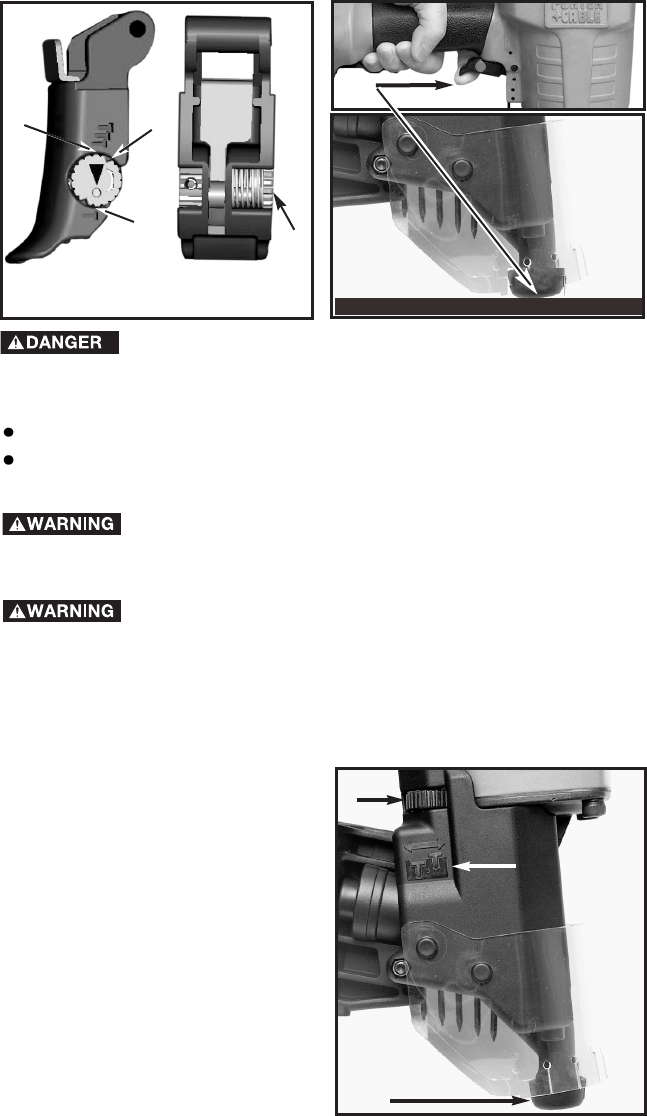
10
Keep fingers AWAY from trigger when not driving
fasteners to avoid accidental firing. Never carry tool with finger on
trigger. In “Contact Actuation Mode” tool will fire a fastener if safety
is bumped while trigger is depressed.
Never point tool at yourself or others.
Never attempt to drive a fastener into material that is too hard, or at
too steep an angle, or near the edge of the workpiece. The
fastener can ricochet causing personal injury.
Disconnect tool from air supply before performing
maintenance, clearing a jammed fastener, leaving work
area, moving tool to another location, or handing the tool
to another person.
Clean and inspect tool daily. Carefully check for proper
operation of trigger and safety mechanism. Do Not use the tool unless
both the trigger and the safety mechanism are functional, or if the tool is
leaking air or needs any other repair.
The depth that a fastener is driven is controlled by the adjustable thumb
wheel depth selector (A) Fig. 26. Test fire a fastener and check depth. If a
change is desired, rotate the thumb
wheel (A) to the left to the next detent
position to lower the depth or to the
right to raise the depth. See
pictogram shown in (B) Fig. 26. Test
fire another fastener and check
depth. Repeat as necessary to
achieve desired results. The amount
of air pressure required will vary
depending on the size of the fastener
and the material being fastened.
Experiment with the air pressure
setting to determine the lowest
setting that will consistently perform
the job at hand. Excess air pressure
can cause premature wear and/or
damage to the tool.
Fig. 26
S
Fig. 24
A
B
C
D
B
A
C
Fig. 25

















